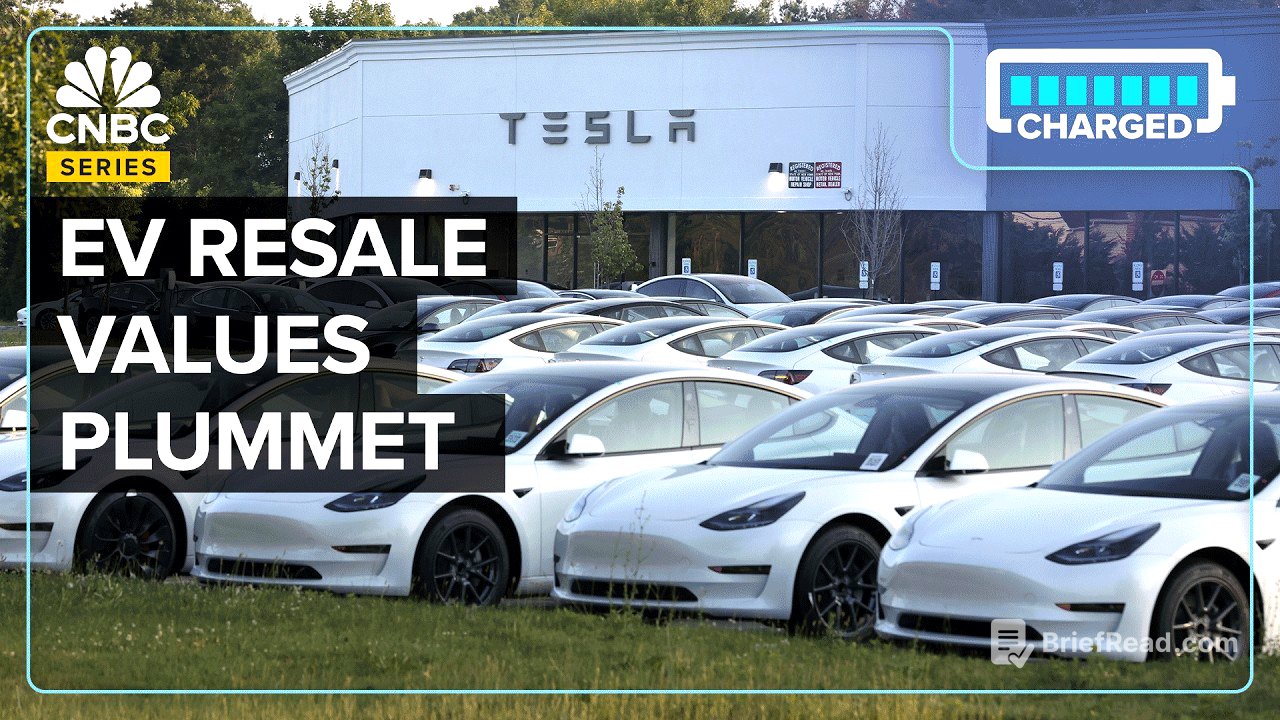TLDR;
This video explores why electric vehicles (EVs) depreciate in value faster than traditional petrol cars. It examines factors such as government incentives, rapid technological advancements, limited consumer appeal, and the increasing volume of used EVs entering the market. The video also offers insights into how these trends might shift in the future and provides advice for potential EV buyers.
- EVs depreciate faster than petrol cars due to incentives, evolving technology and limited appeal.
- The used EV market is expected to grow significantly, potentially lowering prices.
- Holding onto an EV for the long term can mitigate depreciation losses.
Introduction [0:00]
The video introduces the concept of car depreciation, noting that EVs tend to depreciate more rapidly than traditional petrol cars, sometimes losing a significant portion of their value within the first five years. This rapid depreciation can be a concern for new EV buyers, despite the lower operating costs associated with electric vehicles. The video aims to explain the reasons behind this phenomenon and its implications for the future of EV adoption.
Chapter 1: The data [0:52]
The video presents data from a 2025 study by Iseecars, highlighting that a significant percentage of the worst depreciating vehicles are EVs. Models like the Jaguar I-Pace, Tesla Model S, X, and Y, and Porsche Taycan experience substantial value drops within five years. In contrast, vehicles like the Porsche 911 hold their value remarkably well. Overall, EVs depreciate at a higher rate compared to the industry average, impacting the total cost of ownership and potentially hindering wider EV adoption among mainstream buyers.
Chapter 2: Incentives [3:06]
The video discusses the role of incentives in EV depreciation. New cars typically lose value as soon as they are driven off the lot, partly due to dealer and automaker discounts. EVs have benefited from various incentives, including federal rebates, but these incentives can negatively affect resale value. The expiration of the $7,500 federal credit is expected to improve depreciation rates somewhat. EV incentives have been significantly higher than those for petrol cars, contributing to the depreciation issue.
Chapter 3: Evolving technology [4:23]
The rapid advancement of EV technology contributes to their faster depreciation. Newer EVs boast improved range, faster charging times (due to 800-volt architectures), and better battery durability compared to older models. This makes older EVs seem outdated more quickly than traditional cars. Studies indicate that battery health is better than initially expected, and replacement costs are decreasing, which could positively influence consumer perception and resale values.
Chapter 4: Limited Appeal [5:34]
Despite technological improvements, EVs still appeal to a relatively small segment of the market due to their higher prices. Many EVs are either premium or luxury vehicles, making them less accessible to value-oriented buyers. Concerns about public charging availability, range anxiety, and overall functionality compared to petrol cars also limit their appeal. Research indicates that EVs are driven less than petrol or hybrid vehicles, further impacting their perceived value in the used car market.
Chapter 5: The future [7:42]
The used EV market is expected to undergo significant growth, driven by off-lease vehicles. The increasing volume of used EVs could lower prices, benefiting consumers. The expiration of the federal credit for new EVs and the removal of the used EV credit may lead to shifts in demand and supply. Holding onto an EV for an extended period (around eight years) can mitigate depreciation losses, making it comparable to petrol cars. The video advises potential EV buyers to consider their ownership plans, suggesting leasing for those who frequently switch cars and long-term ownership for those seeking to minimise depreciation.









